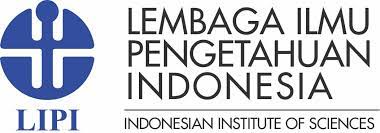IMPLEMENTASI METODE JIBRIL DALAM PEMBELAJARAN ILMU TAJWID DI BLOK C2 PUTRI PONDOK PESANTREN TAHFIDZUL QUR’AN AL-ASY’ARIYYAH KALIBEBER WONOSOBO
DOI:
https://doi.org/10.53866/aljabiri.v2i1.507Keywords:
Jibril Method, Tajwid Science, Islamic Boarding SchoolAbstract
This study aims to 1) find out the application of the Jibril method in learning tajweed in Block C2 Putri Pondok Pesantren Tahfidzul Qur’an Al-Asy’ariyyah Kalibeber Wonosobo, 2)know the impact of the application of the Jibril method in learning tajweed in Block C2 Putri Pondok Pesantren Tahfidzul Qur’an Al-Asy’ariyyah Kalibeber Wonosobo, 3)know the supporting and inhibiting factors of the application of the Jibril method in learning tajweed in Block C2 Putri Pondok Pesantren Tahfidzul Qur’an Al-Asy’ariyyah. This research uses qualitative research in the form of field research. By using primary data sources directly through books, journals, and so on and secondary data i.e. indirect sources through observation, interviews, and documentation. So the data collection technique is carried out in accordance with the search for materials related to research, then followed by specific data. The data analysis uses data reduction, data presentation, and then drawing conclusions. The result showed that the Jibril method is the right method to be applied in learning tajweed. This method teaches students to read the Qur’an tartil and fluently. The steps of the Jibril method are first that the teacher first reads the reading that will be imitated by the students, then the students imitate the reading that has been read by the teacher.
References
Abudin Nata. (2000). Metodologi Studi Islam (p. 125). Raja Grafindo Persada.
Ahmad Salim Bedilan. (2009). Panduan Cepat Menghafal Al-Qur’an dan Rahasia-rahasia Keajaibannya. Diva Press.
Ahmad Shams Madyan. (2008). Peta Pembelajaran Al-Qur’an (pp. 106–107). Pustaka Belajar.
Amirul Hadi. (1998). Metodologi Penelitian Pendidikan (p. 135). CV Pustaka Setia.
Asep. S., Soffan. R, Rahmat.L.G, & Waliko. W. (n.d.). EPISTIMOLOGI AL QURAN (Sejarah dan Integralisme AlQuran (p. 39).
Departemen Agama RI. (2007). Al-Qur’an dan Terjemahnya (p. 2). PT Bumi Restu.
Jasa Ungguh Mulyawan. (2014). Metodologi Penelitian Pendidikan (p. 178). Penerbit Gava Media.
Lexy. J. Moleong. (2002). Metode Penelitian Kualitatif (p. 4). PT Remaja Rosdakarya.
Muhammad Idris Al- Marbawi. (1995). Qomus Al-Marbawi (p. 225). Al-Nasyr.
Nana Syaodih Sukmadinata. (2020). Metode Penelitian Pendidikan (p. 60). Remaja Rosdakarya.
Nurlizam. (2022). Proof Of Love For The Qur’an Bukti Cinta Terhadap Al-Qur’an (p. 146). Uwais Inspirasi Indonesia.
Nursapia Harahap. (2020). Penelitian Kualitatif (p. 123). Wal Ashri Publishing.
PPTQ Al-Asy’ariyyah. (2023, June 17). http://www.al-asy'ariyyah.com/p/pondok-pesantren-tahfidzul-qur'an-al.html
Rahmad Syafe’i. (1999). Ilmu Ushul Fiqh (p. 67). Pustaka Setia.
Ramayulis. (2001). Metodologi Pengajaran Islam (p. 107). Kalam Muliah.
Sugiyono. (2006). Metode Penelitian pendidikan: Pendekatan Kualitatif dan Kuantitatif dan R&D (p. 310). Alfabeta.
Sunarko A. (2015). Iptek dalam perspektif al-qur’an. Manarul Qur’an:Jurnal Ilmiah Studi Islam, 1(15), 2.
Taufiqurrohman. (2005). Metode Jibril, Metode PIQ-Singosari Bimbingan H.M Basori Alwi (pp. 43–44). IKAPIQ.
Downloads
Published
Issue
Section
License
Copyright (c) 2023 Putri Permatasari, Ngarifin Shidiq, Vava Imam Agus Faisal

This work is licensed under a Creative Commons Attribution-ShareAlike 4.0 International License.

















